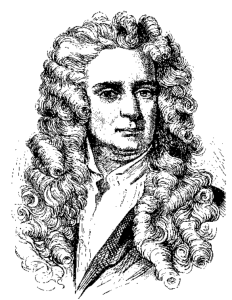1 Standing on the shoulders of giants
In 1675, Isaac Newton penned a letter to his professional rival and fellow scholar Robert Hooke. This missive contained perhaps Newton’s most famous quote “If I have seen further it is by standing on the shoulders of giants.” This phrase was a both a tip of his hat to his primary contemporary competitor as well as a recognition that Newton’s own work was founded on the discoveries and ingeniousness of his predecessors. Hooke has been characterized as the most important experimental scientist of all time, and developed many of the scientific methods used today.
As a physicist, Newton had drawn upon his contemporaries at the Royal Society of London as well as the astronomists, philosophers, mathematicians, physicists, and alchemists who had come before him. His letter was both a reconciliation after years of rivalry, as well as humility in light of his discoveries. Newton knew that he could not make the breakthroughs that he did without the baseline establishments made by others.

Even though Newton gets credit for the quotation, it can originally be traced to the French philosopher Bernard de Chartres, who stated “we are like dwarfs on the shoulders of giants, so that we can see more than they, and things at a greater distance, not by virtue of any sharpness of sight on our part, or any physical distinction, but because we are carried high and raised up by their size.” (Chen, 2003, p. 135). Perhaps Newton gets the credit for this quote because his scientific successes were lasting, and in the subsequent centuries, many others built their extensions and advancements of his work in a way philosophy simply could not. The “shoulder of giants” metaphor is perhaps the most used turn-of-phrase in modern academic article titles. Modern scholars understand the importance of the development of new knowledge and the process of understanding the modern world in light of the old, particularly since the Age of Enlightenment. They tip their hat, as did Newton.
“The history of science is a history of collective, or shared, learning. Historians piece together the way knowledge and ideas spread from one scientist to another. The story of these many connections crosses centuries and continents.”-Eman Elshaikh
What we study as the scientific collective of society will be expanded and improved upon. However, to do this, future scientists have to recognize the knowledge which underwrites their progress.
Let’s follow the development of nuclear energy as an example. In 450 BC Greek philosophy Democritus hypothesized the idea of the atom. In 1800, Dalton found evidence of atoms. Chadwick discovered the neuron in 1932 and in the same year, Cockcroft and Walton split the first nucleus. Nuclear fission was observed in 1938 by Hahne and Meitner, and shortly thereafter, the first atomic bomb was produced in the Manhattan Project. Since that time, we have applied nuclear energy to produce electricity, to power submarines and aircraft carriers, and to treat cancer. None of this happens without a single one of the cascading discoveries prior thereto. Technological advancement begets discovery which begets additional progress. This process of diffusion of technology and scientific discovery is also the method of developing academic theory. Although not as important as nuclear energy use, small theories in management or sociology create foundations for bigger ones and their impact on the specific discipline being studied is profound no-less.
For example, contemporary leadership theories are based on a century long development of leadership theories. Early debates on leadership focused on whether leaders were born or made (Great Man Theory), followed by an exhaustive investigation during the 1950s on which personal traits characterized leaders (Trait Theory). Later scholars focused on task, process, service, and transformation. Contemporary leadership theories such as leader-member exchange (LMX Theory) have been crafted from the lessons and mistakes of previous understandings of leadership.
The purpose of this book is to give you a framework for building on previous knowledge. The literature review is nothing more than describing which giants’ shoulders you are standing on, and if done well, a chance for you to provide a platform for future scholars to stand upon. You become the giant, if your research is worthy of that honor. This book is imbued with the practical application in mind. Be you a graduate student, or early academic, this book will give you a framework and understanding of how to conduct a literature review. We begin by describing the purpose of a literature review, what it contains, and then we provide acceptable methods for conducting a literature review. Finally, we provide guidance on how to improve your writing through use of academic language.


